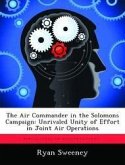The purpose of this monograph is to offer some practical solutions to building unity of effort between Special Operations Forces (SOF) and conventional forces using operations in Afghanistan from 2001 until 2009 as a case study. In researching U.S. legal code and U.S. Armed Forces doctrine, it is clear that both the U.S. Congress and the various services intended all forces to work together towards a common end during operations. In the case of Afghanistan, it is apparent that three things complicated unity of effort between SOF and conventional forces: the lack of an Afghanistan campaign plan by USCENTCOM, the assignment of SOF under the operational control of the conventional force Joint Task Force from 2002 until 2006, and the difficulties of a transition to a NATO command structure in 2006. These complications affected both the activities on the battlefield and the synchronization of operational and strategic plans. This led to problems that included an atmosphere of mistrust and misunderstanding, support issues, conventional forces struggling to command and control SOF, unneeded restrictions on SOF, and personality conflicts that affected operations and synchronization. Several different possible solutions to improve unity of effort exist. They are: changing the command and control structure between SOF and conventional forces, nesting SOF operations and plans with the overall campaign plan, attempting to align the proper personalities with certain tasks and positions, educating and integrating SOF and conventional forces, aligning and empowering liaison officers more appropriately, and aligning SOF headquarters with conventional force headquarters as appropriate. The conclusion is that there are three imperatives to ensuring unity of effort between SOF and conventional forces. The first is to ensure that SOF operations and plans are nested with the overall theater campaign plan and if there is no overall theater campaign plan that SOF take the lead in its dev








